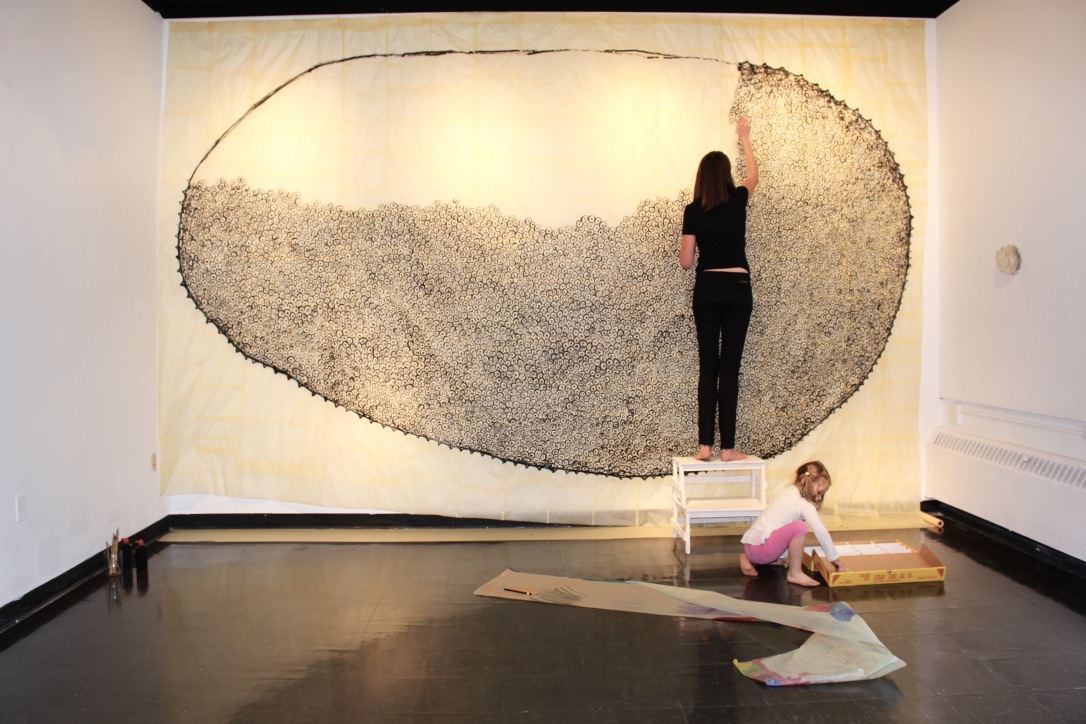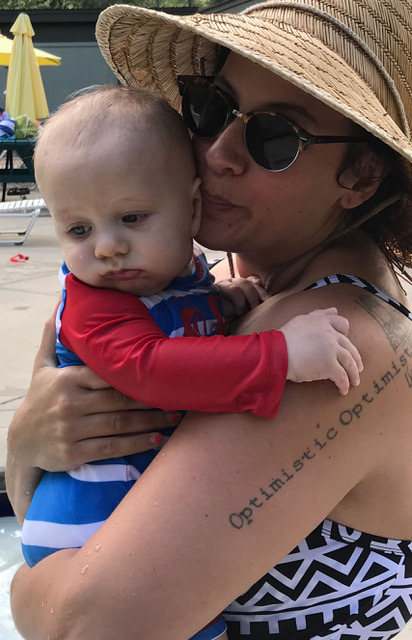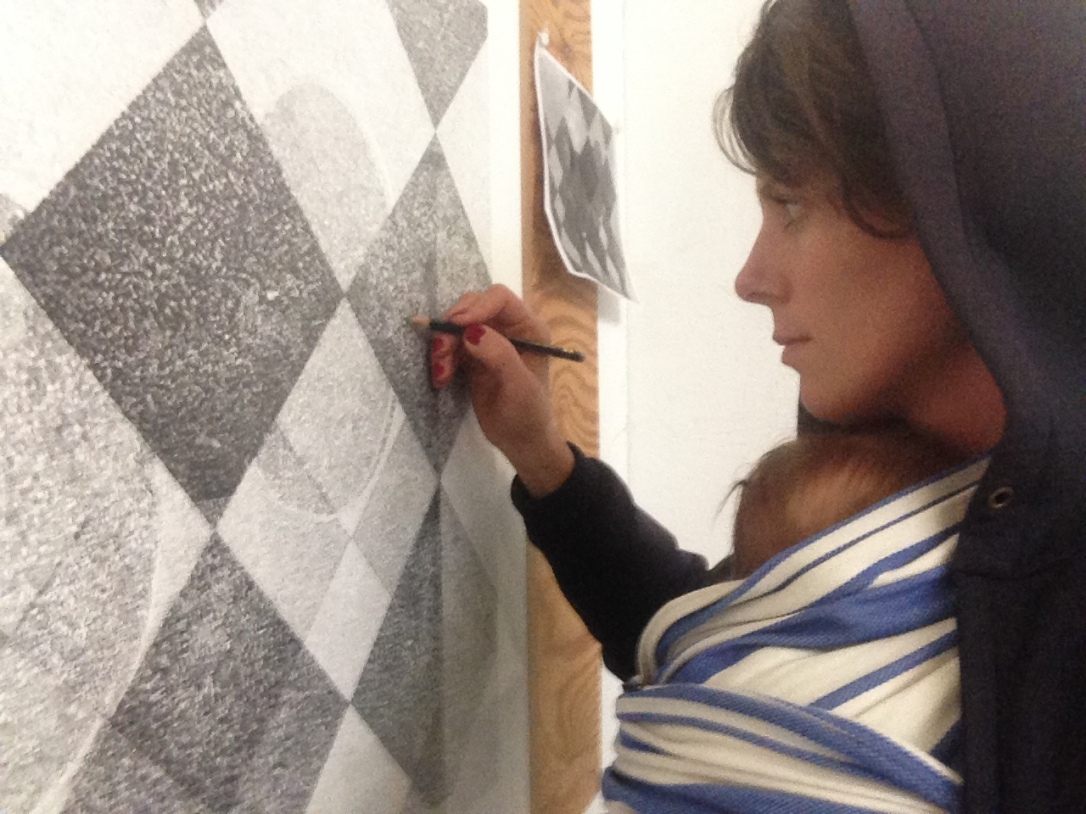 What is it that enables you to work? Childcare, family, a partner, the child/rens father or something else? Please explain.
What is it that enables you to work? Childcare, family, a partner, the child/rens father or something else? Please explain.
This is ever-changing for me. I feel like I’ve lived about five different mother/writer lives. There’s no such thing as “finding balance,” have you ever noticed that? It’s just always shifting. When my two children were babies I was home with them and exchanged babysitting hours with other mother/writers I knew to make writing time, or stole moments during the kids’ naptimes. Often I’ll sneak away on weekends to cafés or writing spaces while my husband watches the kids or takes them to the park. Now I work fulltime, and the children are off at school and afterschool, and I take my lunch hour to write. The lunch time writing hour never feels like much, and it doesn’t work for thinking big, or revising. But in terms of cranking out pages? Since I started setting aside my lunch hour to write a year ago, I’ve written 4 essays and 4 short stories, all at tiny Manhattan café tables. So I guess the answer is, right now what enables me to work is the New York State law that full-time employees are entitled to lunch breaks. (It’s much more civilized than my shifts when I was a stay-at-home-mom!)
Has your work been influenced by being a mother? How so?
Of course, and in ways I’m probably not even fully conscious of. I know I’m less precious about everything now. In graduate school, for instance, I was weirdly religious about writing rituals; I couldn’t write unless my apartment was spotless and I had baked a loaf of bread and I had done a spell with my talismans at my writing desk – I mean, I’m exaggerating a little, but not much. And yet, I’ve probably written my best work on park benches when both the kids fell asleep in the double stroller and I scribbled notes on an envelope. When you’re a parent all the bullshit slips away, you know? I used to get wrapped up in those existential questions that can silence you as a writer: What is the best kind of thing to write? Does the world really need another short story? Why aren’t I as good as X? I write now because I have to, because I become incredibly crabby if I don’t. It’s maintenance. In that way it’s almost more pure – like the writing I did as a kid in a spiral notebook on my bed, just because I felt like it, because the idea was there.
I also suspect I think about my characters differently. I’m more forgiving of people in general – like it’s become clear to me just how complicated and fragile every single human is. So I think my characters have more depth, and are written with more generosity and love.
Can you describe a normal workday?
My days right now are extremely bourgeois. I get up around 5:30 or 6 and either write or go to the gym. I’d rather write, but feel like going to the gym now and then might make me, like, not die. Which seems good. Then I go to my day job as an editor for a website – which is good practice for a writer. Editing others’ work is so much easier than writing, first of all. You can see immediately what’s not working with a piece and why. In your own work it’s so much more murky. My editing job helps me to be a better editor of my own work, and gives me more sympathy for the many editors I’ve worked with in the past!
I set aside my lunch break for my own writing. It doesn’t always happen – you know, doctor’s appointments, lunch dates (but I often have lunch with writer-friends and we discuss our creative work so that counts as writing, kind of, I think) – but I try for 4 days a week. I have a couple go-to spots near my office in lower Manhattan, and I bring my laptop and pound out words for a solid hour. It’s kind of the perfect amount of time to write because you don’t have time to reread or get lost or berate yourself or procrastinate. It’s been years since I’ve had time to procrastinate!
Anyway, then I finish my work day and pick up my kids. My husband works late so it’s just me and the kids in the evening, and I try to be present in my time with them, help them with homework or play a game or make them help me with chores and we talk about our days, and we have dinner together and do bath and all that, and I read to them which is probably my favorite part of the day. That also counts as writing, I feel. We just finished The Lion, The Witch, and the Wardrobe, which is such fun to read aloud, and which made me think a lot about pacing – the pacing in that book is really impeccable for a children’s novel. And about characterization too – has there ever been a more complicated and efficiently drawn character than Edmund?
Then I tell myself, The kids are in bed! I can do some more writing! But usually I fall asleep instead. It’s okay. These aren’t the most creatively productive years of my life, but I am able to fit in enough work that I feel well (I really become insane when I’m not writing at all). My kids are 7 and 9, these really fascinating ages, and it’s important to me to be as present for them as possible. Having a day job isn’t glamorous but contrary to popular belief, I’m not sure how helpful it is for an artist to be broke all the time. I also reached a point with my novels where it became very clear that I didn’t know how to write the kind of book that was going to make a lot of money. That’s fine; I want to write the kind of stuff I like writing, and having a day job takes all the pressure off my novels and short stories to earn their keep. And I’m taking in and absorbing a lot – which is part of the work too of course.
What needs to happen to make it easier for mothers to work within the arts?
Well, on one hand, it’s the same thing that’s needed to help women succeed in any career: affordable, good childcare. Had I had access to any kind low-cost childcare for even just a few hours a day when my kids were tiny, it would have been a great boon to my creative work and mental health. Here in the U.S., especially in expensive places like New York City where I live, childcare costs are just outrageous. I didn’t go back to work at a media or publishing job full-time until my kids were in school full-time in part because I literally would have lost money paying for full-time childcare. It was the right decision for my family, and I feel very fortunate that I was able to be home for all those insane, amazing baby and toddler moments. But as generations of women have found, even if you’re as lucky as I am – I was able to keep freelancing and writing and publishing while I was home, and found it relatively easy to step back into my field – still, you know, seven years out of the workforce = seven years’ wage gap. It’s not easy to hop back into a career, and it seems stupid that it has to be one or the other.
When it comes specifically to creative work, I think a lot about how it’s hard, in our culture, to call something “work” unless it brings in income. There is so little respect for process, for creativity, for the written word, that even I have a hard time calling my writing “my work.” I mean, it’s my life’s work, yes. But when I say, “I’m going to work,” I mean paying work. Sometimes that’s writing, but not usually writing fiction, which is my true love. So even within a family, if a mother says, “Okay, I have to go do my work now, let us pay the babysitter $20/hour so that I can not be with my children and instead do my work,” and that work is writing a scene in a novel that will take 10 years to complete and then maybe not even be published, it becomes hard to justify. It’s like a weird atavistic vestige of the industrial age, when “work” and “life” and “art” became different things, and wage work became all we considered to be “work.” We still have that tainting the way we see all the many kinds of work in our lives.
What would you have done differently knowing what you know now?
Well, I think it would have made a lot more sense for us to move back to the Midwest, to be near my family. When the kids were really small, if my mother had been able to watch them for a few days a week, I surely would have been able to write much more, and have much better balance in my life. And the cost of living would be a lot cheaper. Maybe I wouldn’t even have to have a day job now, and could just fiction write all day. That’s sort of hard to even think about actually.
But then again, I have to remember that I’ve lived in Brooklyn for so long that I take it for granted, and assume I’d be just as happy anywhere – when really I specifically love this specific place a whole lot, and remember first coming here and feeling this great sense of relief, like Oh this is where all the weirdos like me are! I love that my kids are NYC kids. It’s such a fun place to be. So in short I guess my advice to myself would be: live near your family, preferably somewhere inexpensive! But I doubt I would ever take my own advice because my tendency has always been to make things difficult for myself. SIGH.

about
Amy Shearn is the author of the novels The Mermaid of Brooklyn, How Far Is the Ocean From Here, and the forthcoming Unseen City. Her essays and short stories have appeared or are forthcoming in the New York Times, Slate, Oprah, Electric Literature, Catapult, The Rumpus, Brooklyn Quarterly, Nimrod, and elsewhere. She worked with Anchor + Plume Press to publish a posthumously-discovered novella written by her grandmother, Frances Schutze, called The Little Bastard. Amy received a Promise Award from the Sustainable Arts Foundation, and has participated in residencies at SPACE on Ryder Farm and the self-directed Artist Residency in Motherhood. She has hosted and curated many literary events in New York City, including a reading series called Lit at Lark and an author talk series at the Brooklyn Public Library. Amy has an MFA from the University of Minnesota, and currently lives in Brooklyn with her family. You can find her at amyshearnwrites.com or @amyshearn.






 What is it that enables you to work? Childcare, family, a partner, the children’s father or something else? Please explain.
What is it that enables you to work? Childcare, family, a partner, the children’s father or something else? Please explain.
 What is it that enables you to work? Childcare, family, a partner, the children’s father or something else? Please explain.
What is it that enables you to work? Childcare, family, a partner, the children’s father or something else? Please explain.
 What is it that enables you to work? Childcare, family, a partner, the child/rens father or something else? Please explain.
What is it that enables you to work? Childcare, family, a partner, the child/rens father or something else? Please explain.






 What is it that enables you to work? Childcare, family, a partner, the child/rens father or something else? Please explain.
What is it that enables you to work? Childcare, family, a partner, the child/rens father or something else? Please explain. About the Artist
About the Artist What is it that enables you to work? Childcare, family, a partner, the child/rens father or something else? Please explain.
What is it that enables you to work? Childcare, family, a partner, the child/rens father or something else? Please explain. About
About